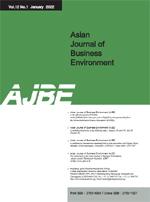Mapping Poverty Distribution of Urban Area using VIIRS Nighttime Light Satellite Imageries in D.I Yogyakarta, Indonesia
Mapping Poverty Distribution of Urban Area using VIIRS Nighttime Light Satellite Imageries in D.I Yogyakarta, Indonesia
- 한국유통과학회
- The Asian Journal of Business Environment(AJBE)
- vol.13 no.2
-
2023.049 - 20 (12 pages)
-
DOI : 10.13106/ajbe.2023.vol13.no2.9
- 28

Purpose: This study aims to map the spatial distribution of poverty using nighttime light satellite images as a proxy indicator of economic activities and infrastructure distribution in D.I Yogyakarta, Indonesia. Research design, data, and methodology: This study uses official poverty statistics (National Socio-economic Survey (SUSENAS) and Poverty Database 2015) to compare satellite imagery's ability to identify poor urban areas in D.I Yogyakarta. National Socioeconomic Survey (SUSENAS), as poverty statistics at the macro level, uses expenditure to determine the poor in a region. Poverty Database 2015 (BDT 2015), as poverty statistics at the micro-level, uses asset ownership to determine the poor population in an area. Pearson correlation is used to identify the correlation among variables and construct a Support Vector Regression (SVR) model to estimate the poverty level at a granular level of 1 km x 1 km. Results: It is found that macro poverty level and moderate annual nighttime light intensity have a Pearson correlation of 74 percent. It is more significant than micro poverty, with the Pearson correlation being 49 percent in 2015. The SVR prediction model can achieve the root mean squared error (RMSE) of up to 8.48 percent on SUSENAS 2020 poverty data.Conclusion: Nighttime light satellite imagery data has potential benefits as alternative data to support regional poverty mapping, especially in urban areas. Using satellite imagery data is better at predicting regional poverty based on expenditure than asset ownership at the micro-level. Light intensity at night can better describe the use of electricity consumption for economic activities at night, which is captured in spending on electricity financing compared to asset ownership.
1. Introduction
2. Literature Review
3. Research Methods and Materials
4. Results and Discussion
5. Conclusion
References
(0)
(0)